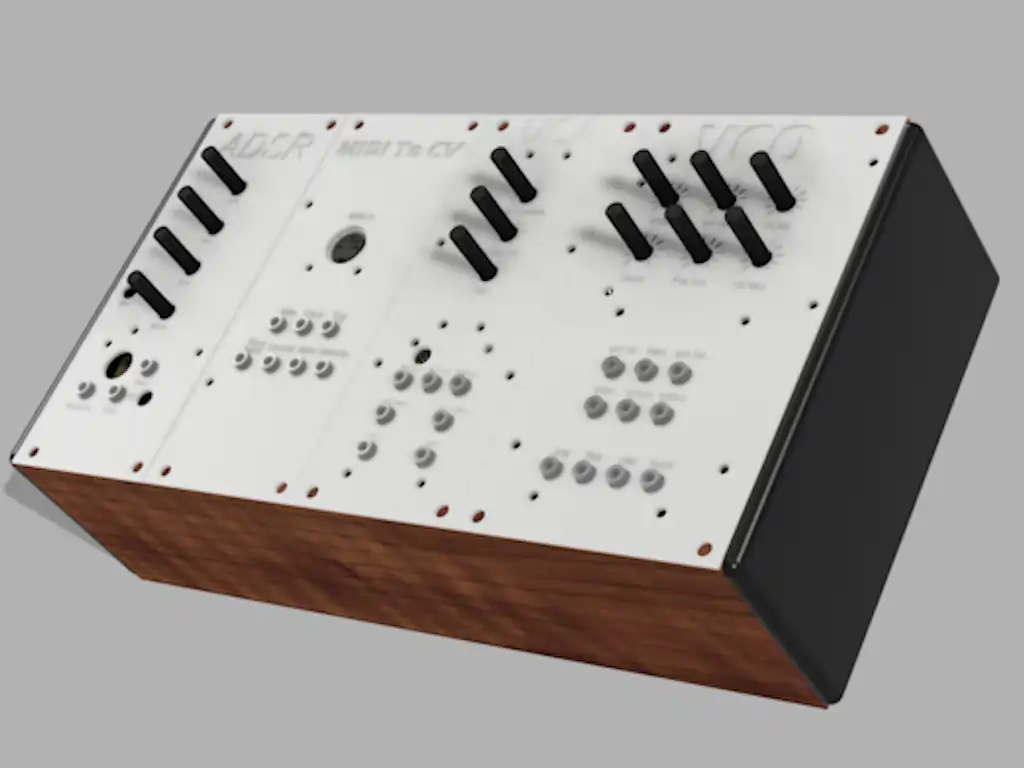Analog and Digital Modular Synthesizer
Analog and Digital Modular Synthesizer
This project encompasses the end-to-end design, prototyping, and integration of a multi-module synthesizer system—including a Voltage-Controlled Oscillator (VCO), MIDI-to-CV converter, ADSR envelope generator, Voltage-Controlled Amplifier (VCA), and a ±18 V/±15 V DC power supply—all housed in a custom ergonomic enclosure. Key deliverables included detailed schematic capture, PCB layout, enclosure CAD design, LTspice simulation, bench-level testing, and a comprehensive user manual to guide setup, calibration, and performance.
Objectives
- Design and implement high-fidelity analog modules (VCO, ADSR, VCA) with low drift and precise control voltages (±0.5 % frequency tolerance, ±0.2 mV CV accuracy).
- Develop a robust MIDI-to-CV converter using 16-bit DACs and opto-isolated input to bridge digital MIDI signals and analog control voltages (0–10 V).
- Create a compact, expandable enclosure and stable power supply delivering regulated ±18 V/±15 V rails with low PSRR.
- Produce complete documentation—schematics, PCB layouts, block diagrams, testing protocols, and a user manual—to ensure reproducibility and ease of use.
Project Process
- System Architecture & Block Diagrams: Defined signal flow between modules and power rails, detailing isolation, summing, and waveform-generation stages.
- Schematic Capture & PCB Layout: Captured detailed schematics in Fusion 360 and routed PCBs for each module, emphasizing grounding, thermal management, and minimal parasitics.
- Fabrication & Enclosure Assembly: Assembled PCBs, installed components (precision op-amps, matched transistors, LDOs), and integrated all modules into a laser-cut wooden/plastic enclosure.
- Simulation & Bench Testing: Validated performance with LTspice and oscilloscope measurements—confirmed VCO range (15 Hz–17 kHz), ADSR timing (1 ms–10 s), MIDI-to-CV linearity, and VCA dynamic response.
- Documentation & User Manual: Authored a comprehensive manual covering setup, calibration to C0, patching examples, troubleshooting, and maintenance procedures.
Conclusion and Future Improvements
The synthesizer prototype achieved stable pitch control across 10 octaves, precise envelope shaping, and reliable CV conversion, demonstrating both analog fidelity and digital flexibility. Future work may explore miniaturized surface-mount designs, additional modules (filters, LFOs), and firmware updates for expanded MIDI CC mapping and preset recall.
Project Information
- Category: Design/Hardware
- Client: Rensselaer Polytechnic Institute
- Project date: 23 April, 2025
- Project PDF: Download MEMO
